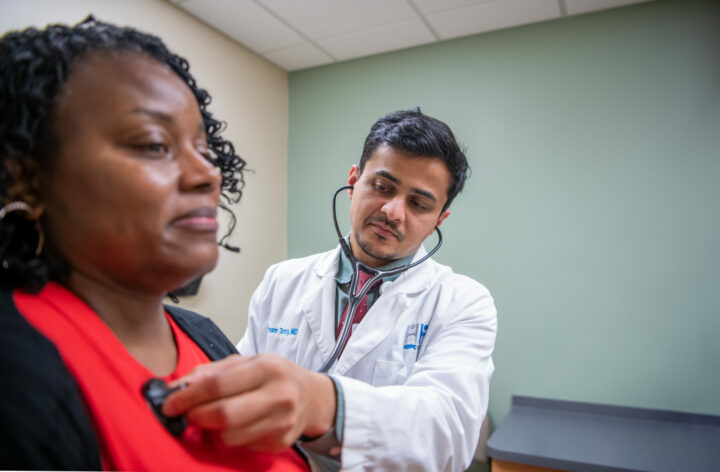Diabetes Signs and Symptoms

Padigar S. Tantry, MD
About 34 million adults in the US suffer from diabetes. That’s 11.6% of the total population. According to the American Diabetes Association, of the total 34 million adults with diabetes, 8.7 million are undiagnosed. Diabetes can lead to serious health problems over time if left untreated. It is essential to notice warning signs early on to decrease your risk of complications from uncontrolled diabetes.
Diabetes mainly comes in 2 forms – type 1 and type 2 diabetes. Each of them has their own indicators and features.
Type 1 diabetes occurs when your immune system attacks the cells in your pancreas, called beta cells, that produce insulin. With little or no insulin in the body, blood glucose levels may become elevated (hyperglycemia). This disrupts the normal physiological balance and can cause diabetes-related complications if not detected early. Type 1 diabetes usually occurs in children and young adults, but it is possible to develop it at any age. The onset of symptoms can be sudden, escalating from mild to severe within weeks.
Some common signs of high blood sugar levels, present with both type 1 and type 2 diabetes, include excessive urination and thirst, weight loss, fatigue, numbness in the hands and feet, and blurry vision. It is crucial to inform your health care provider if you have any of these symptoms, so you can get tested and started on treatment right away.
People with type 2 diabetes produce insulin but become insulin-resistant over time. This is usually due to a combination of poor diet, sedentary lifestyle, and genetic factors. Many people with type 2 diabetes have mild symptoms that go unnoticed for a long time. As a result, these individuals may not notice their symptoms until their blood sugar levels are very high. Due to this, it is critical to be screened for diabetes if you have lifestyle indicators or a genetic predisposition.
Additionally, about one in three Americans have prediabetes, blood sugar levels that are higher than normal but not yet high enough to be classified as type 2 diabetes. According to the CDC, more than 80% of people with prediabetes are unaware they have it. Prediabetes, if left untreated, can lead to diabetes and increase the risk of stroke and heart disease.
Prediabetes often doesn’t have any symptoms. However, some possible signs may include skin tags, darkened skin on parts of the body like armpits or neck, and similar symptoms to diabetes.
Prediabetes can be reversed by adopting a healthier lifestyle and losing weight to return your blood sugar levels to a normal range.
If you are overweight, lead a sedentary lifestyle, are experiencing any of the aforementioned symptoms, and/or have a parent or sibling with diabetes, you should contact your health care provider. Your provider can run blood tests to help determine if you have diabetes or prediabetes, and begin implementing treatment for blood sugar control.
HopeHealth provides diabetes education, prevention, and treatment resources via The Diabetes Institute. To learn more, visit our website or call (843) 432-3717.
Dr. Tantry serves endocrinology patients at the HopeHealth Medical Plaza in Florence. He earned a doctorate from Tbilisi State Medical University in Tbilisi, Georgia. He completed an internal medicine residency at USF Morsani College of Medicine/HCA West Florida Consortium in Brandon, Florida, and an endocrinology fellowship at USF Morsani College of Medicine in Tampa, Florida. Board-certified in internal medicine and Endocrinology, Dr. Tantry speaks English, Hindi, Oriya, and Kannada.